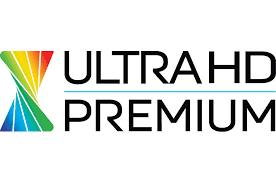What is HDR TV?
As the popularity of the 4k display rises, many are eager to see the next big thing to be in the making display technology. It is in this case where HDR or High Dynamic Range, makes its way to the television. The accessibility of 4k displays and content rising, so does the popularity of the two, however as usual the next big thing has arrived and its name is HDR.

With the passing of CES 2016, the world’s major TV manufacturers unveiled new HDR compatible TVs (Ultra HD Premium), which the next big step in consumer television.
So a lot of people will only know the term HDR from photography, but how does this transition to a television you ask? Well that’s what we’re here to explain!
Simply put, HDR “High Dynamic Range” displays allow for a much wider and richer colour range, brighter whites and much darker blacks, it allows for detail that would often not be seen to be displayed and more natural colours to be displayed bringing it more and more closer to a real-life standard.
Another question you might have is, how will I know it is HDR compatible? This will be denoted a new label known as Ultra HD PREMIUM which will mean to have this badge the TV will need to comply in several areas which define High Dynamic Range, these will be;
A minimum resolution of 3,840 x 2,160: this is what is known as 4k/UHD this is the easy part.
Colour Depth: the UHD Premium tag requires a 10-bit colour signal, to put this in perspective a Blu-ray copy film uses 8-bit colour, which equates to 16 million different colour and the difference in those two bits is HUGE! Because 10 bits contains over a billion individual colours.
P3 Colours @ 90% minimum: P3 is what is referred to as Colour space, what this means is that is the colours will look correct, in perspective this basically moves towards “True Colour” as long as the TV hits 90% it will be considered Premium.
Dynamic Range: To qualify in this section, a television must meet a minimum and maximum brightness this is divided in to two categories, one which caters to brightness and one for darkness, this is done because of different technology in televisions. They are; 1,000 Units for brightness and less than .05 units for the black level and 540 Units brightness and less than .0005 Units black level as you can see, one is might brighter and another much darker this is done because LED TVs are very bright, but are unable to handle very dark images, whereas OLED can produce the deeper and darker colours but struggle in brightness.
In good news however, there is a chance that you may already own an 4k/UHD TV which falls in to this category as with every leap forward with the display industry comes redundancy, you will need to purchase Ultra HD content and a Ultra HD player to play it not to mention the UltraHD Content also means it needs to be mastered for HDR.
The good news is however, as usual our saviours Netflix and Amazon are already working on streaming HDR quality video content.
For more advice and help join the Gadget Helpline Today.
